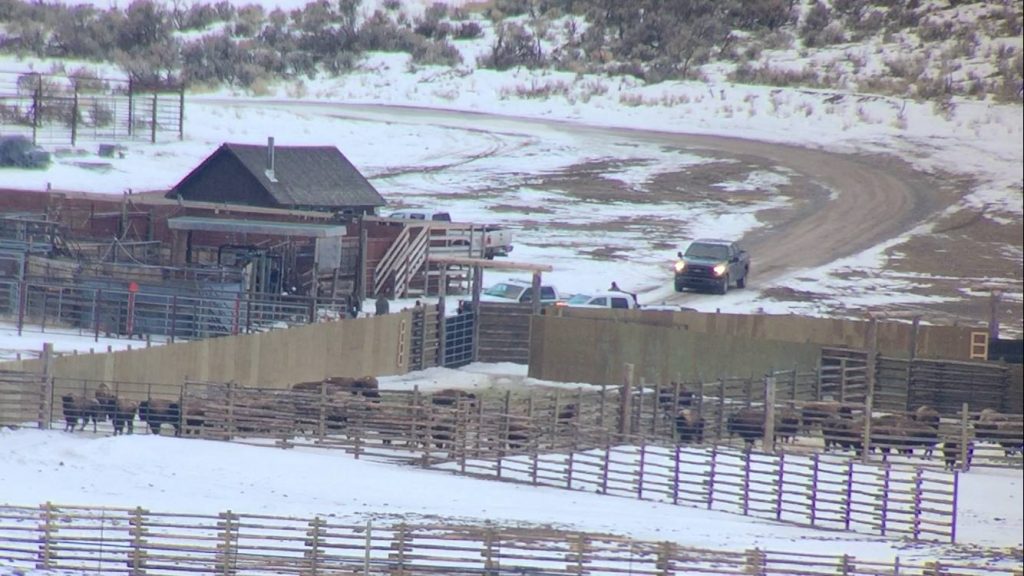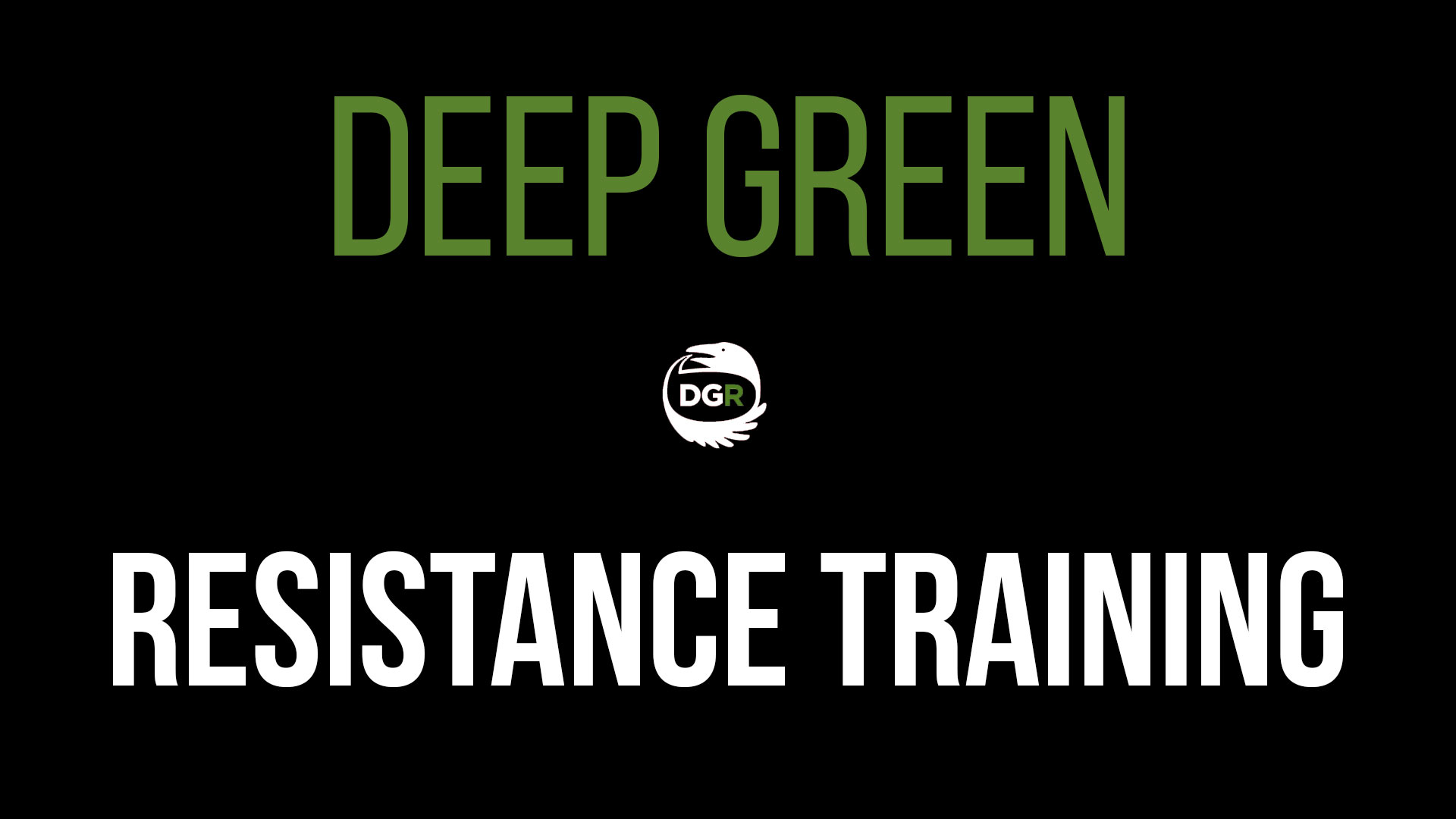
by DGR News Service | Mar 6, 2018 | Biodiversity & Habitat Destruction, Obstruction & Occupation
by Wild Buffalo Defense
Media Contact: Talon BringsBuffalo, 646-352-2126
An hour before sunlight on march 5th two members of the Wild Buffalo Defense collective named Cody and Crow descended from the hills onto Yellowstone National Park’s Stevens Creek buffalo trap and using a steel pipe, locked themselves to the bars of the “Silencer”, a hydraulic squeeze shoot that holds buffalo for testing, shipping and slaughter. In freezing temperatures the individuals blocked the buffalo processing facility and prevented the park from shipping wild buffalo to slaughter.
 When asked why he was taking this action Cody stated, “I am standing with the plains Indians as a member of the Ojibwe tribe in Minnesota, I have a Blackfeet friend who helped me protect my territory from the line 3 pipeline and now I am here for him and the buffalo. I have a love for the people. That’s what my mom passed down to me. And I have love for the environment and animals and I feel like I have an obligation to protect them. If I have to put my body on the line to do so I will.”
When asked why he was taking this action Cody stated, “I am standing with the plains Indians as a member of the Ojibwe tribe in Minnesota, I have a Blackfeet friend who helped me protect my territory from the line 3 pipeline and now I am here for him and the buffalo. I have a love for the people. That’s what my mom passed down to me. And I have love for the environment and animals and I feel like I have an obligation to protect them. If I have to put my body on the line to do so I will.”
The two Yellowstone buffalo herds are the last free ranging, genetically pure, plains buffalo in the United States. These buffalo are decedents of the 23 that survived the buffalo extermination campaign that the US government implemented in the 1800s to starve the plains Indians into submission.
Today the Stevens Creek Buffalo Trap costs the Yellowstone Parks Service 3 million dollars per year to maintain and despite years of public opposition continues to operate their capture-for-slaughter facility within the park boundary. Activists and tribes allege that the Montana cattle lobby controls how the Parks Service manages of the wild buffalo. Crow, the other individual who locked himself to the facility stated “They say they need to kill the animals to stop the spread of Brucellosis, but the wild elk have Brucellosis and they are allowed to roam free because the cattle industry is not worried about elk competing for grass and the state receives income from the elk hunting permits.” Every year the facility captures and sends roughly 1000 animals of the 4000 wild buffalo population to slaughter.
While the two individuals locked themselves to the shoot, some activists gathered at the gate of the facility with banners reading “Wild buffalo slaughter = cultural genocide.” Their signs spoke to the connection between the culture of the plains tribes and the wild buffalo, suggesting that by exterminating the last wild buffalo, Yellowstone is effectively attempting to do the same to the culture of the plains tribes. The non-violent direct action came in the wake of a decision by the Montana department of livestock and the animal plant and health inspection service to deny the Fort Peck Indian reservation the right to receive wild buffalo from the park.
To Support Wild Buffalo Defense please contribute to our campaign and legal fund!
Campaign Fund: https://www.youcaring.com/wildbuffalodefense-1119076
Legal Fund: https://www.youcaring.com/wildbuffalodefense-1119210

by DGR News Service | Feb 2, 2018 | Culture of Resistance, Direct Action, Movement Building & Support, The Solution: Resistance
Activists, save these dates:
Deep Green Resistance will conduct advanced training in direct action, revolutionary strategy, tactics, and organizing June 22 – 24. This workshop is aimed at providing practical skills and networking to activists, organizers, and revolutionaries interested in saving the planet.
Environmental and social justice activists realize we are losing. Our tactics are failing and things are getting worse. This training will focus on escalation and creative, advanced tactics to increase our effectiveness.
Topics include the use and deployment of soft and hard blockades; hit and run tactics; police interactions; legal repercussions of resistance work; operational security; terrain advantages; strategy; escalation, and more.
The training will be conducted by experienced Deep Green Resistance activists / organizers as well as noted guest speakers (to be announced).
Sessions will be held next to Yellowstone National Park, providing a perfect setting to immerse ourselves in the natural world and activism.
Space is Limited and priority will be given to front-line activists, marginalized communities, and women. And save money with Early Bird Tickets – available for a limited time.
Click this link to apply now: https://deepgreenresistance.org/en/resistance-training-2018
Fitness enthusiasts know that resistance training leads to greater strength. Enhance the effectiveness of your resistance with us this June.

by Deep Green Resistance News Service | Dec 28, 2017 | Direct Action
Featured image: Water Protectors from the Raccoon Rebellion-Arkansas Chapter conduct a safety lock-out/tag-out of a Main Operating Valve on the Diamond Pipeline as a Christmas gift to the Natural State.
Editor’s note: This news illustrates how simple, relatively safe, and cost-effective small actions can be. They simply put locks on a pipeline valve control box. The company only needs to send an employee out with bolt cutters to undo the action, but it’s a good example of how easy it is to access such equipment, and how easy it would be to cause more lasting effects.
by Jacques Rogiers / Indybay
On Christmas, with help and assistance from Santa Claus, his reindeer, and mischievous elves, some raccoons from the Arkansas Chapter of the national “Raccoon Rebellion” conducted a safety lockout tag-out on Diamond Pipeline Main Operating Valve (MOV) #2021 east of Jerusalem, Arkansas in accordance with common industrial safety procedures. The Lockout/Tagout devices were placed to prevent access and operation of this hazardous inter-state tool of the extractive, exploitative fossil fuel industry.
Using an eminent domain provision of the State Constitution – created in the last century, the Diamond Pipeline has been drilled, dug, and blasted across the Natural State. Chairman and CEO Greg “Scrooge” Armstrong of Plains-All American (PAA) used every loophole on the books to avoid common sense review, mediation, and mitigation while misrepresenting those that opposed the threat to their water as terrorists.14 Counties, 13 major rivers and creeks, 11 drinking water watersheds, 4 Arkansas NRC Priority Watersheds, 10 Critically Endangered Species, 2 Nuclear reactors as well as major portions of the Arkansas and Mississippi River, 5 Heritage crossing sites, and countless homes, farms and property owners are affected. Any moment now the imported steel from the lowest bidder could break and the ghost of Mayflower past will coil like a black evil spirit – with no emergency plan in place.
This pipeline is unsafe. The continued construction and operation of new fossil fuel infrastructure projects like this and so many others is the TRUE CRIME. We know this from years of extensive monitoring, study, and observation supported with hard evidence–photos, federal regulation, and personal observations by experts. The flora and fauna of the Natural State admire and support the efforts of so many organizations and people that have used every available means to have an open and meaningful dialogue and review. However, we can wait no longer.
Future interventions in the interest of common public safety must occur. In solidarity with the “Rabbit Ridge Resistance” we echo the demands they made before the line went into limited operation.
We demand that Governor Asa Hutchinson:
– Invoke executive authority to halt operation of the Diamond Pipeline for the protection of the people, lands, and wildlife of Arkansas.
– Conduct a complete review of all the information concerning pipeline safety and construction irregularities and hold public meeting in every county affected.
– Conduct complete review of use of law enforcement and security groups in the suppression of lawful 1st Amendment activities associated with protest and opposition to oil and gas industries.
– Invoke a complete moratorium on any OTHER use of eminent domain laws by private utility companies until effective procedures are in place to assess and provide public input to ANY use of those laws.
– Create a bonded, insurance fund to cover ANY potential damage caused by the leak, explosion, or faulty construction by any oil and gas infrastructure project.
–Raccoon Rebellion – Arkansas Chapter

by Deep Green Resistance News Service | Dec 17, 2017 | Obstruction & Occupation, Strategy & Analysis
by Norris Thomlinson / Deep Green Resistance Hawai’i
Puget Sound Anarchists and It’s Going Down have reported on four recent incidents of simple sabotage against rail operations. Using copper wire to signal track blockage (as depicted in a video on how to block trains), actionists have executed cheap and low-risk attacks to temporarily halt:
The Decisive Ecological Warfare strategy of Deep Green Resistance aims for cascading systems failure to shut down industrial destruction for good. Though these acts of sabotage are unlikely to cause more than minor inefficiencies in rail transport, they offer more return on investment than even the most successful aboveground actions.
For example, last year three DGR members halted a coal train for 12 hours before being arrested. Compared to other aboveground efforts, this was a very efficient operation, achieving a lengthy stoppage with a minimum of arrests. However, the total cost to carry out the action was high. Not only did the three activists spend significant time planning and executing the blockade itself, but a support team ensured rail employees and police couldn’t harm the activists without being documented (though this by no means guaranteed their safety.) Afterwards, the three arrestees faced multiple court dates consuming time and money, and causing stress. All charges were eventually dropped, but presumably the state would be less lenient for recidivism, raising the cost for repeated use of this tactic.
Contrast that to the statement by the Columbia River track saboteurs: “Trains were stopped for at least several hours and maybe more. Carrying out the action took less than an hour, about $40 materials, and little-no risk of being arrested.” (Presumably they also spent time beforehand to scout and plan.) Their use of underground tactics allowed them to hit and run, minimizing their risk, stress, and total investment in the action, and leaving them free to repeat the attacks at will. Not sticking around to be arrested is an enormous advantage, and our resistance movement must increase its use of guerrilla tactics to leverage our relatively meager resources.
DGR members don’t have the option of using underground tactics. By publicly opposing industrial civilization and calling for physically dismantling it, we’re obvious suspects for law enforcement to monitor and interrogate following underground attacks. Our role is to spread the analysis of the necessity and the feasibility of bringing it all down, and to support anyone who is able to carry out underground attacks.
We commend and thank those involved in these recent successful actions. We hope they’ll use the skills and confidence they’ve built in a low-risk environment to escalate their attacks to critical industrial infrastructure. And we hope none of them ever get caught, but if they do, we’ll be there to support them.
Analysis of Efficacy
On an Earth First! Journal page hosting the video on how to block trains, two commenters suggest this tactic isn’t effective at all:
“Lol if theres no reason a train should have a red signal, the dispatcher will have a crew sent out to find the problem, and in the mean time simply give trains authority past it. Try again.”
“Railroads have signal maintainers on duty 24/7/365 to troubleshoot issues like track circuits and keep trains moving on any given operating subdivision. I guess what you don’t understand is regardless of what you’re jumpering out there, trains can still move down the line.”
The posts are anonymous, and the authors express contempt for the actions of the saboteurs. Since they’re clearly not trying to give constructive feedback, it’s hard to know how seriously to take the critiques. If anyone has concrete knowledge of the impact of this tactic, please share. The better we understand the systems we want to disrupt and dismantle, the better our chance of success.
Read about more attacks on rail and other infrastructure at our Underground Action Calendar
To repost this or other DGR original writings, please contact newsservice@deepgreenresistance.org

by Deep Green Resistance News Service | Nov 20, 2017 | Obstruction & Occupation
by Makwa Initiative Line 3 Front Line Resistance
Early Wednesday morning water protectors from Camp Makwa stormed an Enbridge construction site, and delayed progress on the last unfinished Wisconsin segment of their proposed line 3 pipeline project. One individual from the Diné Nation descended into the muddy trench, climbed onto the pipe, and locked himself to welding equipment. A Leech Lake Tribal member then climbed atop an excavator and attached himself to a hydraulic arm. Construction was halted for approximately six hours, costing the company thousands of dollars, as the individuals put their bodies on the line to protect the water and the futures of their children.
See the video here
Later in the day two more water protectors were arrested, while standing on the side of the public road. They were both tackled to the ground by Sergeant Kirchhoff of the Superior Police Department. For one of the arrests, when asked on what grounds he was acting, officer Kirchhoff cited a warrant that he could not produce. Later investigation found that the warrant he cited was unsigned and improperly filed. Last Week Sergeant Kirchhoff received media attention for tackling a woman to the ground without warning at a similar protest. The woman’s charges were later dropped.
The Enbridge Line 3 Replacement Project is estimated to carry almost one million barrels of tar sands oil from Alberta, Canada to Superior, Wisconsin; Enbridge has received approval in Wisconsin, but has not received approval in Minnesota, which would be the largest segment of the proposed project. The non-violent direct action came after a week of evidentiary hearings in Minnesota, where Enbridge revealed that it had already paid for 100% of the pipe for the project. The same day as the action it was discovered that before her time in public office Judge Ann C O’Reilly, the individual in charge of holding public hearings on the Line 3 Project, worked for a firm that represented oil companies on multiple occasions.
One water protector stated “Enbridge doesn’t have their permits for Minnesota and they have already started chopping trees down for their easement and filling its pipe storage yards. We went to the public hearings and found them full to the brim with Enbridge employees who were paid to be there. We fought again and again just to have 3 minutes to speak. Now we watch as truck after truck come into our communities carrying pipes and out of state pipeline workers. We made our comments, but they didn’t listen. The project is already bringing violence to our land and our women and children. We know that with these man camps comes increased levels of drugs, rape, and missing and murdered indigenous women. Enbridge will not take no for an answer so we have to stop them. We want to make clear in no uncertain terms, Enbridge is not welcome in Minnesota.”
Donate to Camp Makwa-
Camp Supplies: youcaring.com/makwacampsupplies
Legal Fund: youcaring.com/makwalegal
by Deep Green Resistance News Service | Oct 4, 2017 | Property & Material Destruction
by Max Wilbert / Deep Green Resistance
Have you heard the incredible news about Jessica Reznicek and Ruby Montoya, two activists who sabotaged the Dakota Access Pipeline? In early August, the two women admitted to committing multiple acts of eco-sabotage against the Dakota Access Pipeline (DAPL). They made their statement on video in front of the Iowa Utilities Board, talking about what they had done, reading their press release, and then started to tear down the sign of the Utilities Board.
The two women were arrested for that action, then released on bail. Their home has since been raided by the FBI and materials have been confiscated in an ongoing investigation. I highly recommend you read their press release. It’s fascinating.
These two are likely to be charged with serious crimes, and we urge you to follow their case for ways that you can support them.
One of the things that’s most important about their press release is in reference to a specific act of sabotage the two women carried in May 2017. This action was hidden from the public. At the time of the event, Energy Transfer Partners described it as an accident. They covered up the fact that the delay was due to sabotage.
There are certain situations in which it’s in a corporation’s or government’s best interest to disclose that there has been sabotage to drum up public opposition and outrage, invoke terrorism or whatever the latest political specter is in order to make people afraid, boost budgets, and allow the further curtailment of civil liberties.
However, there are other situations in which it’s in their best interest to hide what is going on—to not tell people about these attacks. Obviously, this was one of those circumstances. The thought process of managers at Energy Transfer Partners must have been something like this: “We don’t want people doing copycat actions, we don’t want people understanding that these tactics can be effective, that sabotage can be effective at stopping this pipeline.”
Two people alone made a huge difference using these tactics. They delayed the pipeline for months. That’s something that tens of thousands of people involved in the public Standing Rock protests were barely able to match. While nobody was ultimately able to stop the pipeline, the fact that two women with no training and almost no money were able to seriously damage and delay the pipeline is a testament to how effective sabotage can be.
The reason Jessica and Ruby came forward is that they wanted the truth to be known. To me, that’s very important. It’s inspiring. It points to the fact that there are likely many more of these actions happening than we know about. It’s not in the corporations’ best interest to tell us, because these stories of resistance are inspiring and they know that. This is a dangerous thing, and they know that.
See Max Wilbert’s video here. DGR interviewed Jessica Reznicek and Ruby Montoya about their actions. Read their interview here.

 When asked why he was taking this action Cody stated, “I am standing with the plains Indians as a member of the Ojibwe tribe in Minnesota, I have a Blackfeet friend who helped me protect my territory from the line 3 pipeline and now I am here for him and the buffalo. I have a love for the people. That’s what my mom passed down to me. And I have love for the environment and animals and I feel like I have an obligation to protect them. If I have to put my body on the line to do so I will.”
When asked why he was taking this action Cody stated, “I am standing with the plains Indians as a member of the Ojibwe tribe in Minnesota, I have a Blackfeet friend who helped me protect my territory from the line 3 pipeline and now I am here for him and the buffalo. I have a love for the people. That’s what my mom passed down to me. And I have love for the environment and animals and I feel like I have an obligation to protect them. If I have to put my body on the line to do so I will.”



